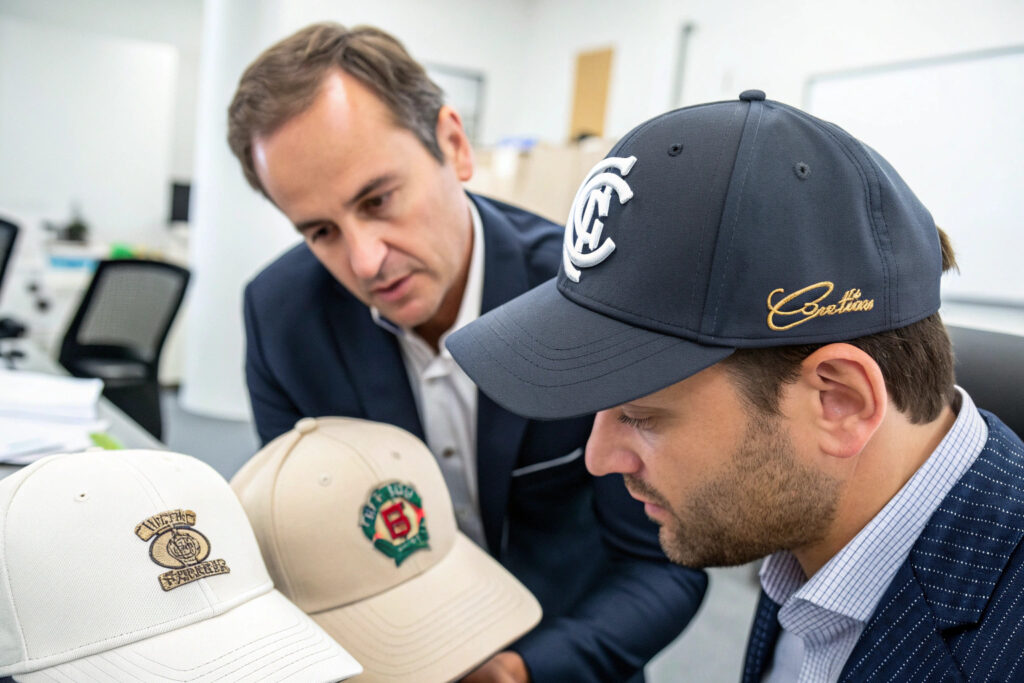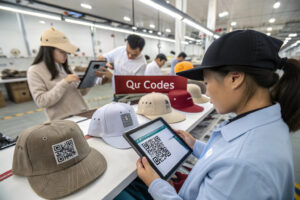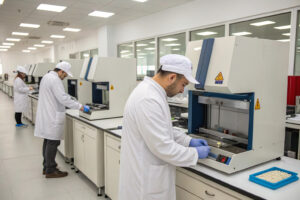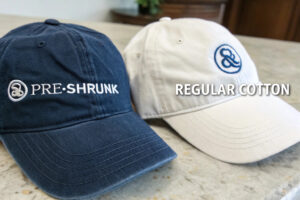Getting custom embroidered logos on caps should be simple, but many businesses struggle with unclear processes, quality inconsistencies, and unexpected delays. You want your brand representation to be perfect, but navigating digitization, thread choices, and placement options can be confusing without proper guidance.
The process for ordering custom embroidered logos involves submitting your logo artwork, selecting embroidery specifications like stitch type and thread colors, approving a digital sample, and then proceeding with production once you confirm the physical cap sample. Working with an experienced manufacturer ensures your logo translates perfectly from design to finished product with crisp details and professional quality.
This comprehensive guide will walk you through each step of the ordering process, help you understand technical embroidery requirements, and show you how to avoid common mistakes that can compromise your branded caps.
What are the essential steps in the embroidery ordering process?
Following a structured ordering process ensures your embroidered caps meet expectations and arrive on time. Skipping steps or rushing through details often leads to disappointing results and costly revisions.
The essential steps include artwork preparation, digitization, sample approval, and production. Each phase requires specific inputs and approvals to maintain quality control and ensure your final products accurately represent your brand identity.

How should you prepare your logo artwork?
Proper artwork preparation is crucial for successful embroidery. Provide your logo in vector format (AI, EPS, or PDF) with clean lines and distinct color separations. Avoid gradients, shadows, and extremely fine details that don't translate well to stitching. If you only have a raster image (JPEG, PNG), our design team can vectorize it, but this may involve additional fees and time. Clearly specify your preferred thread colors using Pantone numbers or physical thread charts to ensure color accuracy. We recommend simple, bold designs with minimum detail for the cleanest embroidery results.
What happens during the digitization process?
Digitization converts your artwork into a digital file that embroidery machines can read. This specialized process determines stitch types, density, direction, and the sequence for each color. Poor digitization creates puckering, thread breaks, or unclear logos. Our experienced digitizers analyze your design's complexity and recommend adjustments to optimize it for embroidery. We provide a stitch count estimate upfront since highly detailed logos with thousands of stitches cost more and take longer to produce. The digitization fee is typically included when you place your production order.
What embroidery specifications affect quality and cost?
Understanding embroidery specifications helps you make informed decisions that balance visual impact with budget constraints. The right choices ensure your logos look professional while controlling production costs.
Key specifications include stitch type, thread quality, stitch density, and logo size. Each element influences the final appearance, durability, and price of your custom embroidered caps.

How do stitch types impact the final result?
The two primary stitch types are fill stitch (tatami) for solid areas and run stitch for outlines and fine details. Fill stitches create solid, durable coverage for larger design elements, while run stitches work better for text and thin lines. Some manufacturers use 3D puff embroidery for raised effects, particularly on letters and shapes, which adds dimensional impact but increases cost. Our embroidery experts recommend the optimal stitch combination during the digitization process based on your logo's characteristics and the cap fabric you've selected.
Why does thread quality matter for durability?
Thread quality directly affects how well your embroidery withstands washing, sun exposure, and wear. Rayon threads offer brilliant shine and vibrant colors but have moderate durability. Polyester threads provide excellent colorfastness and strength, making them ideal for workwear or caps exposed to outdoor conditions. Specialized threads like metallic or glow-in-the-dark options are available but may require different machine settings. We use high-quality German-made polyester threads for most orders because they maintain color vibrancy through repeated washing and sun exposure.
How do you choose the right cap for embroidery?
The cap style and fabric significantly influence embroidery results. Some materials and constructions work better for detailed logos, while others limit design possibilities.
Consider crown structure, fabric type, and panel construction when selecting caps for embroidery. Each factor affects how cleanly your logo stitches and how well it maintains its appearance over time.
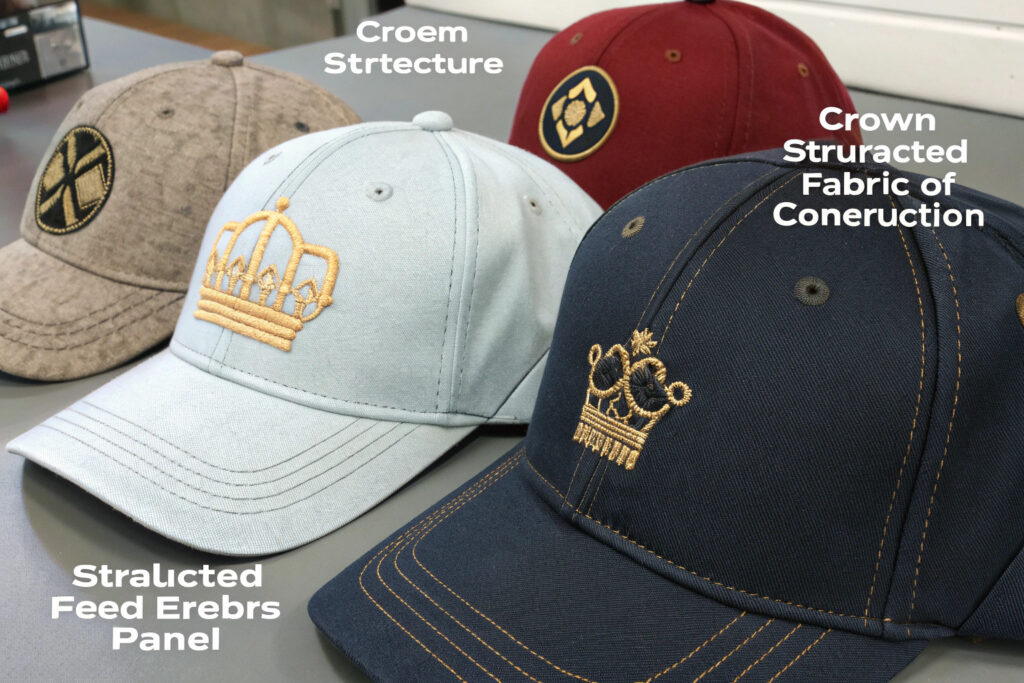
Which cap fabrics work best for embroidery?
Medium-weight fabrics with tight weaves provide the best foundation for embroidery. Cotton twill and polyester-cotton blends offer excellent stability for detailed stitching without puckering. Structured caps with firm front panels prevent distortion during the embroidery process. Avoid extremely stretchy materials or very thick fabrics like heavy wool, which can challenge even experienced embroiderers. Our most popular cap for corporate embroidery is the structured cotton twill cap because it provides a perfect balance of embroidery surface stability, comfort, and professional appearance.
Where should you position your embroidered logo?
Standard logo placement is centered on the front panel, approximately 2.5-3 inches below the crown seam. Left chest placement is also popular for more subtle branding. Consider your logo's proportions when deciding placement—tall, narrow designs might work better on the curved side panels, while wide logos typically fit best on the front center. During sampling, we provide placement recommendations based on your specific cap style and logo dimensions to ensure optimal visibility and professional appearance.
What are common embroidery mistakes and how to avoid them?
Understanding common embroidery pitfalls helps you prevent issues before production begins. Many problems originate in the preparation stage and become apparent only after caps are manufactured.
Common mistakes include inappropriate logo complexity, incorrect digitization, poor thread/fabric combinations, and unrealistic size expectations. Addressing these issues during planning prevents disappointment with finished products.

Why do some detailed logos not embroider well?
Overly complex logos with fine lines, small text, or gradient color effects often fail to translate clearly into embroidery. Tiny text below 0.25 inches becomes unreadable when stitched, and subtle color variations disappear. Simplify detailed artwork before submitting it for embroidery by reducing color counts, thickening fine lines, and eliminating tiny elements. Our design team can suggest modifications that preserve your logo's essence while making it embroidery-friendly. Remember that embroidery is an interpretation of your logo, not an exact replication.
How can you prevent puckering and distortion?
Puckering occurs when thread tension pulls too tightly on the fabric, creating wrinkles around the design. This commonly happens with dense stitching on lightweight fabrics or when improper stabilizers are used. We prevent puckering by selecting appropriate stabilizer backings based on your cap fabric and adjusting stitch density during digitization. Using cutaway stabilizers for stretchy fabrics and tearaway stabilizers for structured caps ensures smooth, professional results without distortion. Our quality control team checks for these issues during sampling and production.
Conclusion
Ordering custom embroidered logos on caps requires careful attention to artwork preparation, technical specifications, and material compatibility. By understanding the embroidery process and working with an experienced manufacturer, you can ensure your branded caps perfectly represent your company while standing up to regular use.
If you're ready to create custom embroidered caps for your team, promotion, or retail business, we at Global-Caps have the expertise and equipment to deliver exceptional results. Our team guides you through each step from design to delivery. For personalized assistance with your custom embroidery project, please contact our Business Director Elaine at elaine@fumaoclothing.com. Let's create caps that make your brand look its best.
